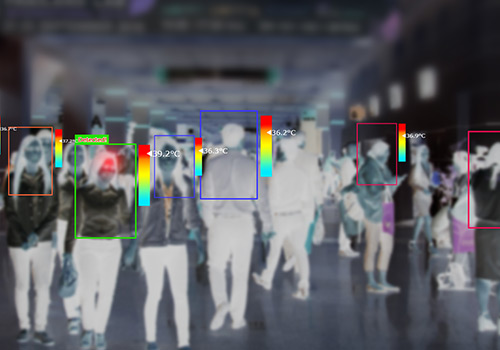Infra-Red Thermal Fever Scanning Briefing Note

Temperature Screening
For Employers considering thermal infra-red temperature screening for employees and visitors entering their premises, their priority has to be the reliability of the technology, and its operating accuracy.
This is a confusing market with 10’s of providers claiming pinpoint temperature accuracy. Unfortunately, the accuracy of most of these technologies, especially those screening at some distance, will be adversely affected by normal operating conditions, giving rise to false positive and negative temperature readings.
Until the current pandemic, only a handful of manufacturers concentrated on this highly technical segment of the infra-red thermal market. In recent months it has become crowded with new providers, many with technology that is unsuitable for the task.
Anomaly Group is a UK distributor for an established global leader in thermal temperature scanning since 2003, with in excess of 30,000 thermal scanning systems deployed in the public and private sector.
Anomaly – Infra-Red Thermal Camera (IRT) Systems
T20 – Handheld Infra-Red Thermal Fever Camera
With an accuracy of ±0.5C the T20 is the most accurate handheld camera at its price point. The temperature recorded is displayed on the integral LCD screen. An automatic visual warning alerts the operator when irregular temperature readings are detected.
It operates from a safe distance of up to 1.2 meters when tripod-mounted, providing accurate skin temperature readings. People being screened should face the camera and remove their glasses (as this can produce a false reading).
Suitable for moderate footfall the unit is ideal for screening subjects individually. There are two operating modes; Single Mode allows the operator to screen subjects individually and Fast Mode (recommended use with a tripod) auto-detects an individual as they enter the observation corridor approaching the unit head-on.
In common with most IRT’s it takes the skin temperature of an individual in the area of the Inner Canthus or tear duct, as this provides the best correlation with their core temperature.
The core temperature is less affected than the skin temperature by external physical factors such has hot sunlight or a sudden burst of exercise, and thus provides the most accurate assessment of an individual’s actual temperature. See full specification.
IR36 – Remote IR Thermal Fever Scanning System
Remote IRT’s are designed to temperature screen multiple people at walking pace at several meters distance. They are ideal for high footfall areas, with the capability of monitoring 10 people simultaneously.
The IR36’s advanced technology sets itself apart from all other remote systems by deploying advanced camera technology, combined with artificial intelligence algorithms, to deliver consistently accurate temperature readings of up to ±0.3°C accuracy.
Most other remote IRT systems have accuracy issues (see below). These can be critical as the difference between normal human temperature (37°C) and fever (38°C) is only 2.7%.
Although individual cameras may achieve high degrees of accuracy when screening one person at a time, their accuracy is often compromised when screening multiple people simultaneously at longer distances, as the scanned heads are rarely at the optimum angle for the single focal point.
The IR36’s unique accuracy is achieved by taking 5 simultaneous temperature readings across each individual’s forehead. Then, using artificial intelligence algorithms, it references the readings across a unique database of 10’s of thousands of actual skin and core temperature records, refining in real-time each individual reading.
The IR36 is the only remote IRT system which provides this comparative assessment of each individual’s skin temperature to their core temperature. In this way, it eliminates, as far as is possible, both false positives and negatives.
By taking the 5 simultaneous temperature readings the IR36 also eliminates the common inaccuracies other systems suffer due to their cameras having to focus on a single, often inaccessible point, with oblique camera angles, poor pixel quality, or scanned individuals wearing eyeglasses.
System Hardware
The IR36 camera can be stand, ceiling or wall-mounted and allows multiple people to be screened accurately and simultaneously at distances between 3-8 meters. The system includes a Blackbody, a device that emits heat at precise levels to check the calibration of the infrared temperature sensor. A separate PC and screen allow remote monitoring. See full specifications.
The principle challenges of recording accurate skin temperatures include:
- As for smaller IRT’s, the remote cameras mainly focus on each person’s Inner Canthus.
- When screening multiple moving people simultaneously, some will be facing at an oblique angle to the camera, masking in whole or in part their Inner Canthus.
- People wearing glasses may also distort the temperature reading.
- Accurate skin temperature readings require a sufficient density of pixels to be concentrated on the focal point – 9 to 16 Pixels are recommended.
- Some cameras record temperature with just one pixel on the focal point; they are unlikely to be accurate.
On obtaining an accurate skin temperature reading it is still necessary to correlate this with each individual’s core temperature.
A small number of the better remote systems use a sample group (up to 10 people) who are individually screened to provide a control group against which all other screenings are compared that day. The IR36’s AI temperature referencing algorithms provides a more accurate solution.
